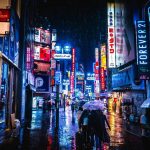Lessons from the Rose Fellowship: Patrick Piuma
He was one of four Daniel Rose Fellows from Louisville, Ky., who concluded their fellowship year at the ULI Fall Meeting in Chicago. The ULI Daniel Rose Center for Public Leadership interviewed Patrick Piuma, Director of the Urban Design Studio, about the experiences of his fellowship year.
Rose Center: During the fellowship year, your team focused on revitalizing Louisville’s Fourth Street corridor. Now that the fellowship has drawn to a close, how has the area continued to develop?
Piuma: There’s been a lot of activity on Fourth Street lately. Some of it is directly related to the interest that was generated from the Rose Center project, and some of it was already in the works [prior to the fellowship year]. The Rose Center project helped tie it all together.
There is more retail now. Old Louisville is an incredible place, and I think it’s still undervalued, both by people who live here and by people from outside the city. We initiated a lot of streetscape improvements and other projects near the University of Louisville campus. There’s a lot of interest near Fourth and Oak as we continue to revitalize that commercial area.
What role has the Rose Center played in your professional development?
Just being able to brainstorm with people from other cities, being able to talk about land use issues, and then being able to go to other cities and see what is happening on the ground is an immense benefit for me. Most of what I do, most of what we do at the Urban Design Studio is trying to figure out how to improve the city. We do this by looking at best practices from around the country.
The Rose Fellowship helped to facilitate this exchange of knowledge beyond what I was able to do in the past.
What kind of work is the Urban Design Studio engaged with in Louisville?
The Urban Design Studio is part of the University of Louisville; it originally started out as a collaboration between our university, the University of Kentucky, and Louisville Metro Planning & Design Services. We do a lot of outreach, including education about the built environment and sustainability. We do planning work with small organizations around the city, but we try not to compete with private companies. If there is a neighborhood association for a given area, we provide them with our expertise and technical assistance.
We do advocacy, policy analysts, and urban design. Kind of a mix of everything. We are a design studio. I think it’s fortuitous that this year’s fellows [during the San Francisco Study Tour] were able to go meet with SPUR. That’s very similar to what we aspire to be, though they’ve been around for a hundred years, so they have a bit of a head start!
How does the Urban Design Studio continue to be involved with the land use challenge identified by your fellowship team?
We are continuing to take the project forward beyond the level of city government. Our Master of Urban Planning class capstone this year will spend an entire semester focused on furthering the Urban Land Institute initiatives.
Much of your team’s vision for the Fourth Street corridor relied upon a vision of increased walkability and increased density in the community. Is Louisville experiencing the growth necessary to provide that density?
Even during the recent economic downturn, we’ve had slow, steady growth. Although it hasn’t been anything explosive, we’re seeing a lot more interest in the city from people around the country, which is good. The city has been finding ways to take that, capitalize on it, and bring more businesses and peole into the city.
But in general, we just have an ongoing need to think more critically about how we can develop our city and make it more efficient. There is a lot of interest — from a lot of people — to look at density, specifically alternative modes of transportation, which rely on density in order to be functional.
People want to live in denser areas right now. However, the city doesn’t really offer that. It’s difficult to tell what kind of demand, or interest, there is until we begin to develop that density. But I can say there has been a lot of interest from developers looking at the city, and Fourth Street in particular, as places to start. So we are planning for that.
The fellowship experience shined a light on some of the things we need to do in this particular corridor. It opened up conversations that we haven’t been able to have in the past.
This interview was conducted by Timothy Boscarino of Issue Media Group.



